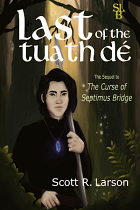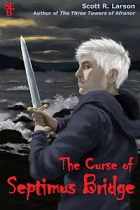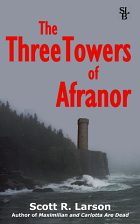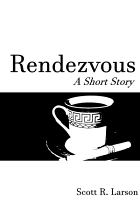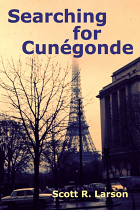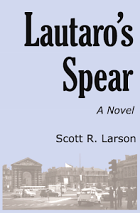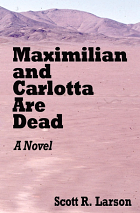My Ten Favorite non-English Language Movies of All Time…
This is a list of my ten favorite movies which are not in English. As with my top ten list of English language films, this is emphatically not necessarily the same as what I think are the best movies of all time but rather ones which have had a special emotional or intellectual effect on me and are thereby closest to my heart. Limiting this list to ten movies was hard enough, so I refuse to rank them. The list is therefore alphabetical.
Les Enfants du Paradis (Children of Paradise) (France, 1945). Seeing this film, directed by Marcel Carné (1909-1996), is one of the most amazing experiences ever. The performances by a sprawling cast, led by Jean-Louis Barrault as the mime Baptiste and Arletty as the object of his affections Garance, are pure magic and poetry. The film is impressive enough on its own merits, but it becomes something even more extraordinary when we understand the circumstances under which it was made. It was filmed during the Nazi occupation of France and many of the actors were members of Resistance whom were sought by the Gestapo. This background of desperate hide-and-seek makes for a cosmic counterpoint to the movie’s tale of injustice in 19th century Paris.
Eréndira (France/Mexico/Germany, 1983). This movie has a special place in my heart because it was scripted by Colombia’s Nobel Literature laureate Gabriel García Márquez and is taken from an episode in his classic novel Cien Años de Soledad (One Hundred Years of Solitude), one of my favorite books of all time. In all honesty, the magic of García Márquez’s writing doesn’t always transfer adequately to the screen, and this particular story about a stern grandmother (Irene Papas) and her domination of her beautiful granddaughter (Claudia Ohana) isn’t necessarily the one I would have chosen, but Mozambique-born Ruy Guerra’s whimsical direction does provide some memorable images indeed.
Film d’Amore e d’Anarchia (Love and Anarchy) (Italy, 1973). Lina Wertmüller’s fifth outing as writer/director of a feature film has only grown in my estimation since I saw it for the second time, a quarter-century after seeing it the first time. Like so many great movies, it is a deft mixture of comedy and tragedy, and it has a powerful message regarding the futility of war and violence. Wertmüller paired the stars Giancarlo Giannini and Mariangela Melato in several other films, but they were never so funny or affecting as they were in this one.
Der Himmel über Berlin (Wings of Desire) (Germany, 1987). Stunningly beautiful to watch in glorious black and white, this movie works not only as a piece of art but also as an involving story with one of the most romantic plots of all time: an angel falling in love with a mortal. All of this plus Peter Falk, playing himself, and a great soundtrack too. The director and co-writer, of course, is Wim Wenders, who has given us such classics as The American Friend, The State of Things, Paris, Texas, Until the End of the World, and more recently The End of Violence and the documentary Buena Vista Social Club. Wings of Desire holds up despite Wenders’s probably unnecessary sequel (Faraway, So Close!) and a thoroughly Hollywood remake by Brad Silberling (City of Angels) with Nicolas Cage and Meg Ryan.
Orfeu Negro (Black Orpheus) (Brazil/France/Italy, 1959). When I lived in South America, someone actually told me that in Brazil there was a rule against tapping pencils on a desk in the workplace because this would inevitably lead to the entire office having a full-blown rumba session. I don’t know if this was really true, but I can believe it, based on my own encounters with groups of young Brazilians on transcontinental bus journeys. They were never without a guitar or two, and they never seemed to stop singing and dancing, no matter where they were. That’s exactly what this glorious movie by Marcel Camus (1912-1982) is like. An update and transplant of the Orpheus and Eurydice myth from ancient Greece to Rio de Janeiro during Carnival, the film is a splendid symphony of color and sound. Antonio Carlos Jobim’s haunting music will stay with you literally for years.
Shichinin No Samurai (The Seven Samurai) (Japan, 1954). If this isn’t the ultimate action/adventure flick, then it’s certainly the seminal one for our century. A masterpiece by one of the greatest filmmakers of all time, Akira Kurosawa (1910-1998), it is part of an oeuvre that includes such classics as Rashomon, The Hidden Fortress, Dersu Uzala, Kagemusha and Ran. Among its cast is the ubiquitous Toshiro Mifune, Japan’s answer to John Wayne. Its timeless story of mercenaries who give their all to save a defenseless village has not only spawned outright remakes (1960’s western The Magnificent Seven, which itself inspired a couple of sequels, and 1980’s scifi Battle Beyond the Stars), but its general premise has shown up in lots of movies, including Star Wars: Episode I – The Phantom Menace.
Sinnui Yauman (A Chinese Ghost Story) (Hong Kong, 1987). When you go to the movies, the one thing you are always hoping for is to be blown away by an experience unlike anything you have ever seen before. This doesn’t happen often, but when it does…! One such time for me was the midnight film festival screening of Siu-Tung Ching’s A Chinese Ghost Story, one of the first Hong Kong movies I had ever seen. No amount of time spent watching special effects and stunt work from Hollywood can prepare you for the breathtaking action and images of movies like this. It had been ages since my jaw had dropped and I had asked, “How the heck did they do that?” The experience was all the sweeter because there was actually a story behind all the fury and movement, a haunting tale of supernatural love. The director’s oeuvre also includes two sequels to this film (an animated version was also made) as well as such wonders as Terracotta Warrior, Swordsman, The East Is Red and Dr. Wai in “The Scripture with No Words.”
Spoorloos (The Vanishing) (Netherlands/France, 1988). This movie works, like so many classic suspense thrillers, because it preys on a particular deep-rooted human fear. In this case it is the dread of suddenly and inexplicably losing a loved one in a setting that seems perfectly safe and normal. Paris-born director George Sluizer then focuses on the hero’s obsession with finding out what happened to his girlfriend and explores just how far he will go to find out her fate. By the time we reach the Edgar Allan Poe-like conclusion, we have been through an experience that sticks with us for years. This film was too powerful and creepy to be confined to the usual art-house cinema goers, and it was Sluizer himself who directed the 1993 American remake with Jeff Bridges and Kiefer Sutherland, which made use of a truck stop on Interstate 90 (which I know well) for the disappearance. I have never been able to make myself watch the remake and, anyway, I heard they ruined the ending.
La Vita è Bella (Life Is Beautiful) (Italy, 1997). Normally I prefer to let a few more years pass before deciding that a film is a classic for the ages, but I feel confident that Roberto Benigni’s masterpiece will stand the test of time. Its audacious mixture of light comedy with the greatest horror of our century works better than it has a right to. In spite of the hype, in spite of the Academy Awards for Best Foreign Film and Best Actor, in spite of Benigni’s antics on Oscar night, in spite of a Robin Williams quasi-remake, the memory of this treasure prevails.
Z (Algeria/France, 1969). After six years of seeing some of America’s best-known leaders (starting with JFK) gunned down, there was something cathartic about this political thriller by the Greek-born Costa-Gavras, in which the conspiracies and cover-ups of a political assassination are all laid bare in exhilarating fashion. What was particularly amazing was the fact that the crowd-pleasing plot was closely based on actual events, i.e. the death of Greek liberal Gregorios Lambrakis in 1963 and the subsequent investigation, which preceded Greece’s 1967 military coup. Never before or since have politics and entertainment merged to create such a satisfying movie. Costa-Gavras went on to make several other politically themed films—including ones about Uruguay (State of Siege), Chile (Missing) and even American white supremacists (Betrayed)—but he’s never since matched the energy and moral ambition of Z.
Click here for a list of my ten all-time favorite movies in English
Click here for a list of all my five-star and four-star movies















